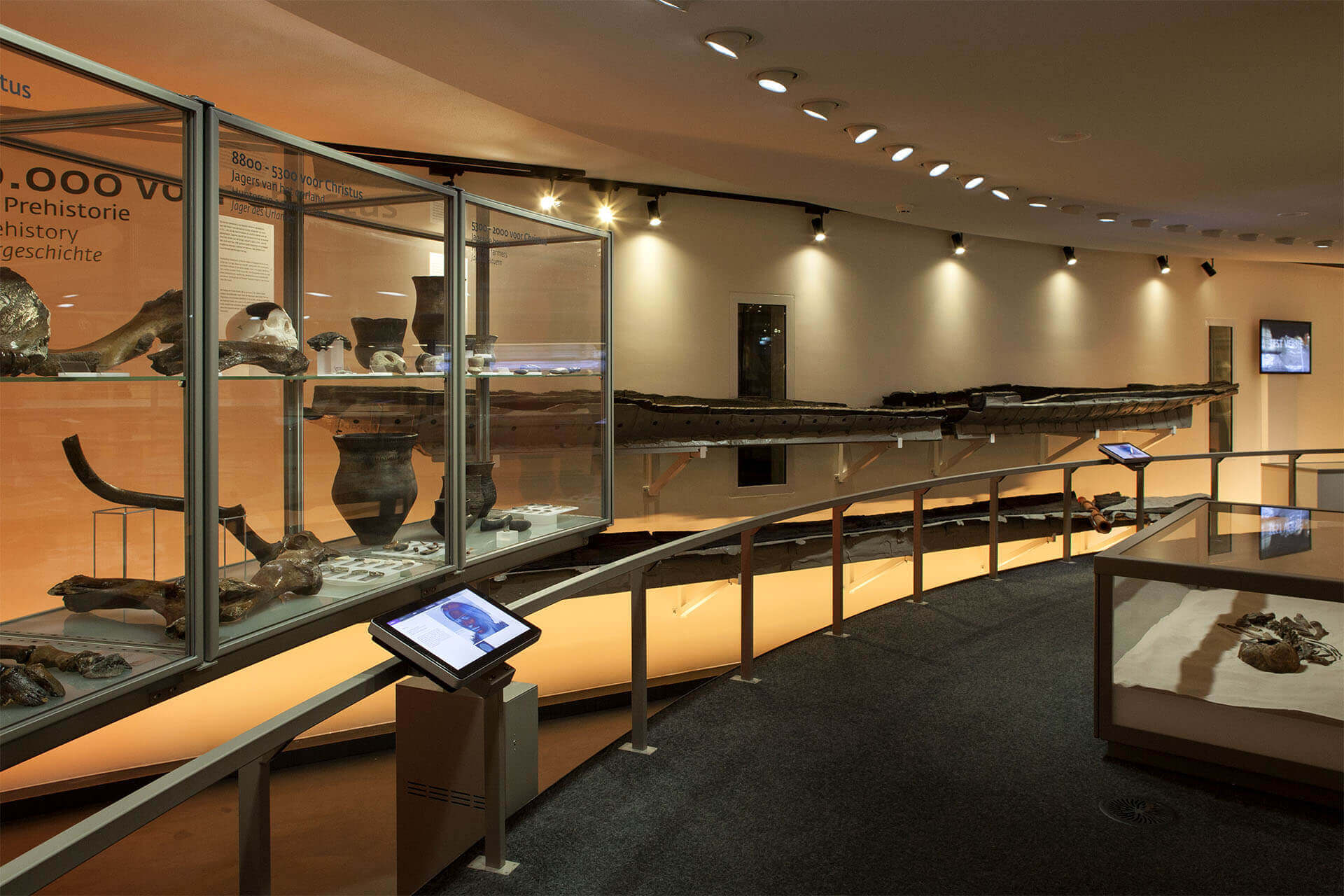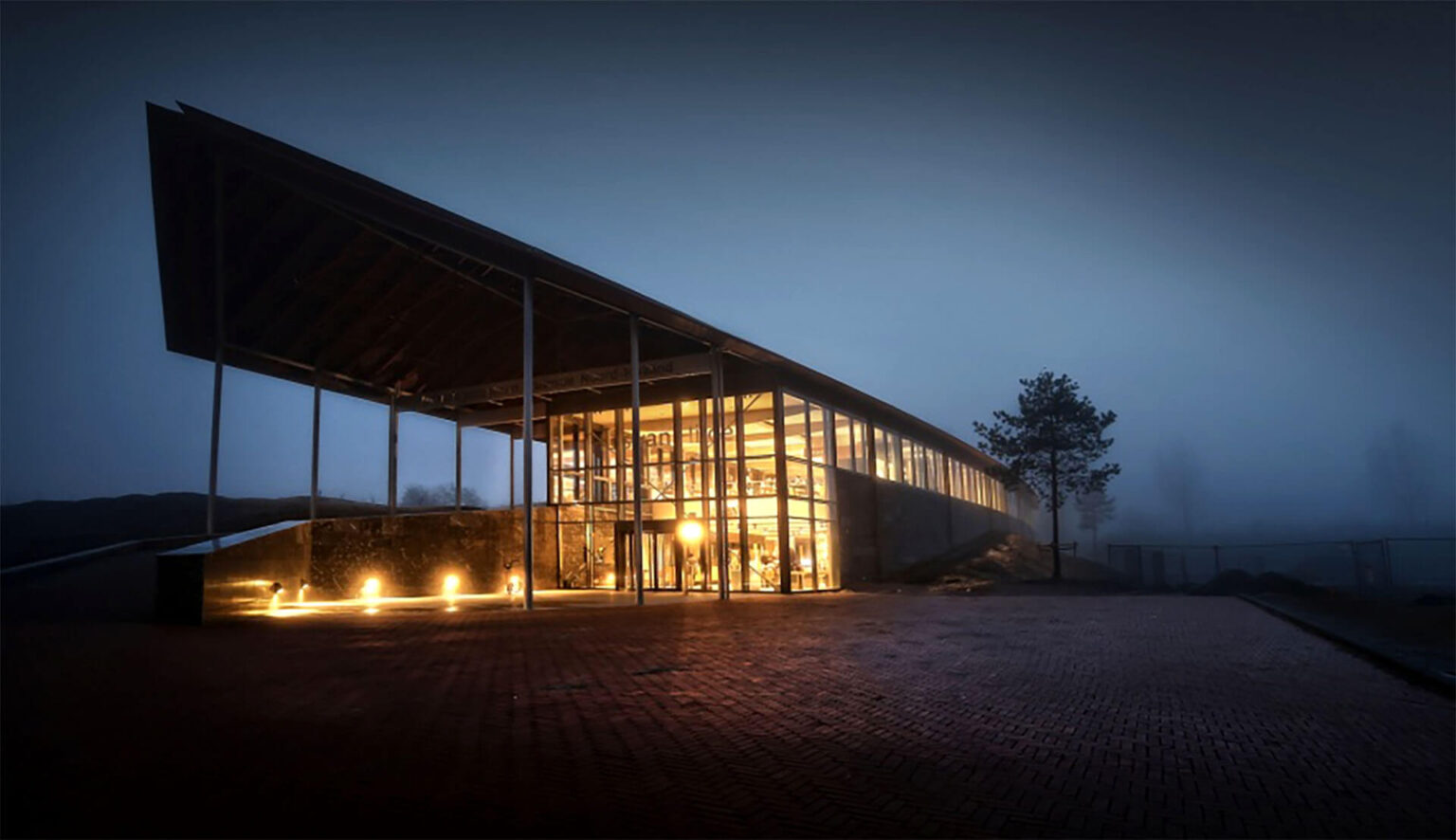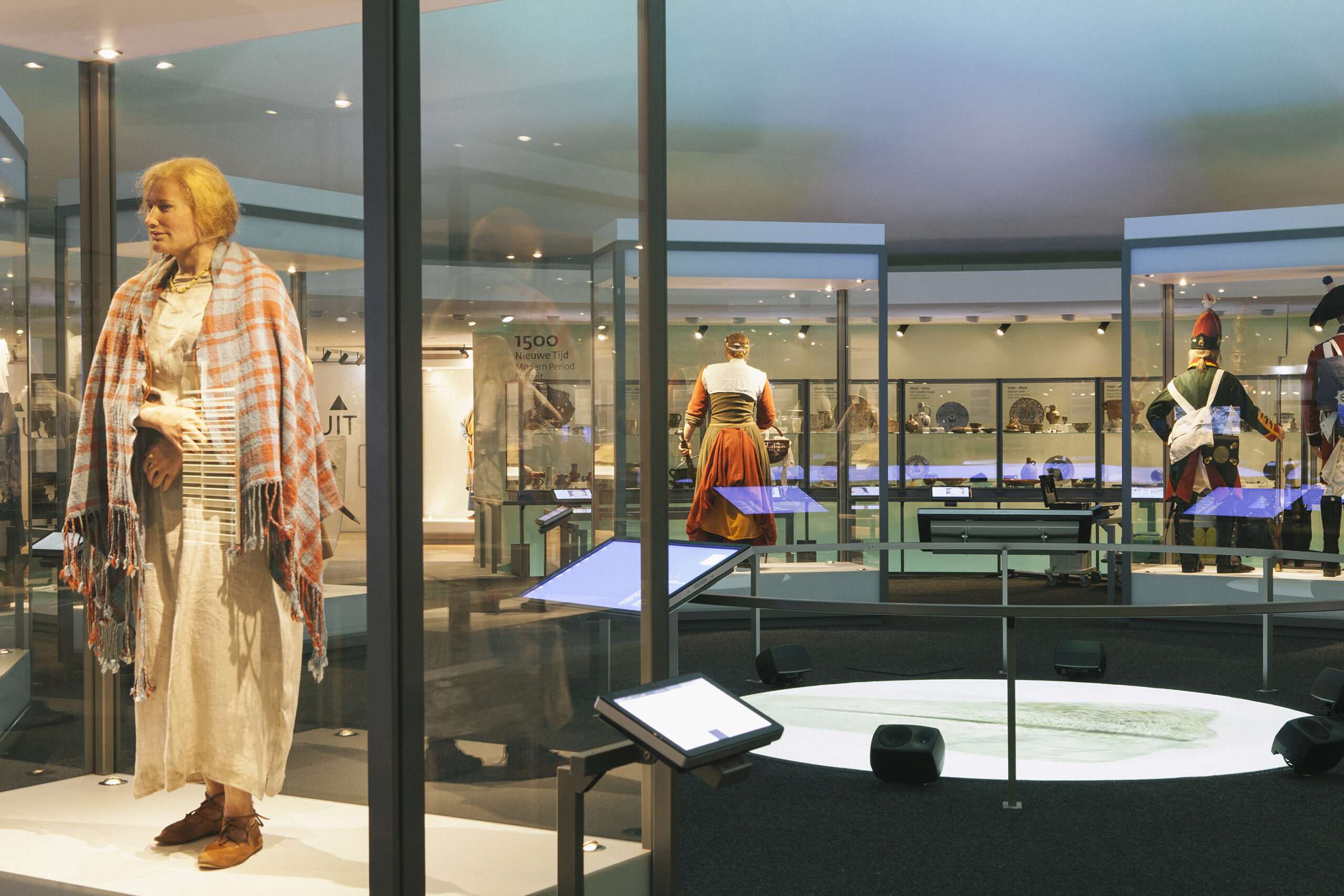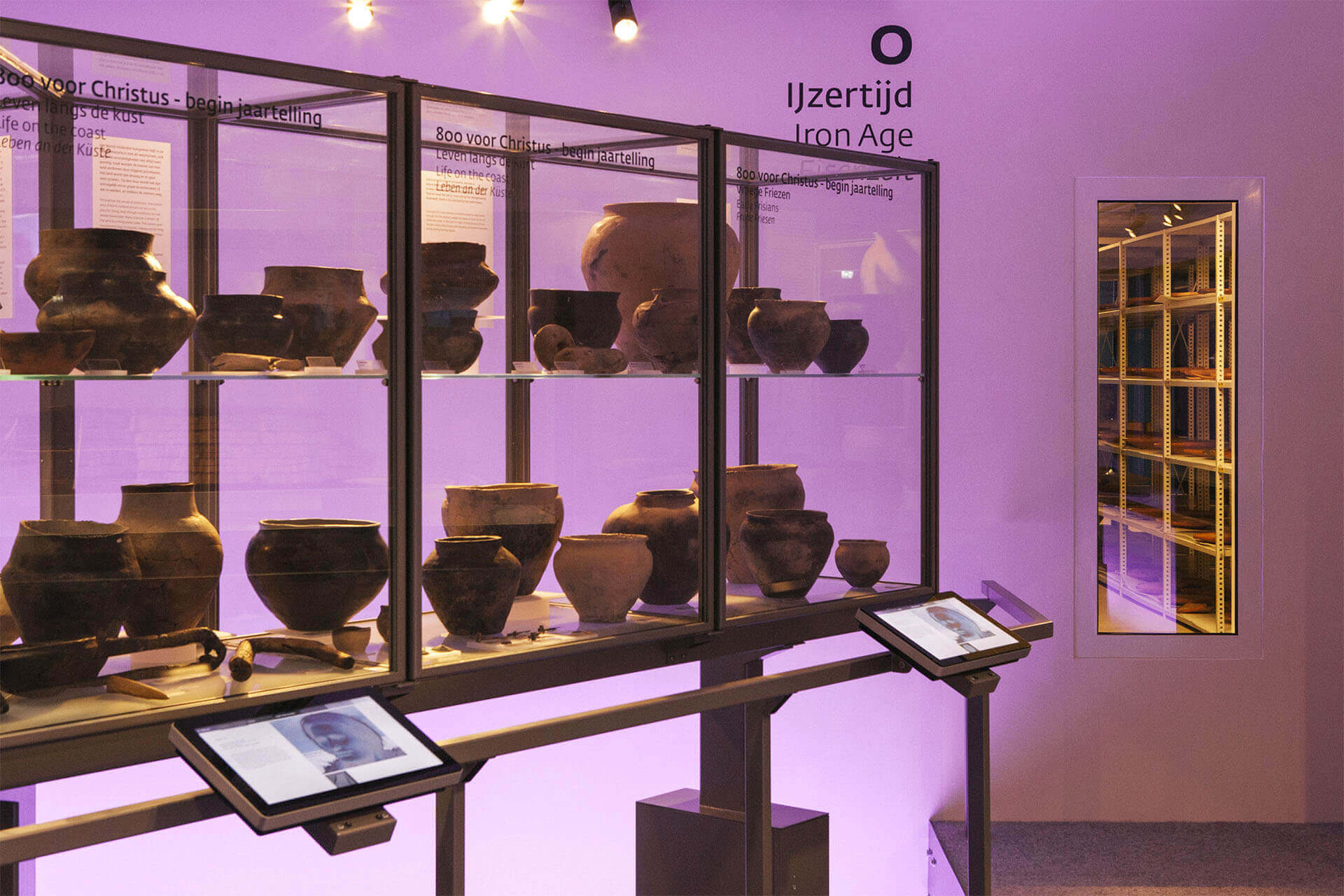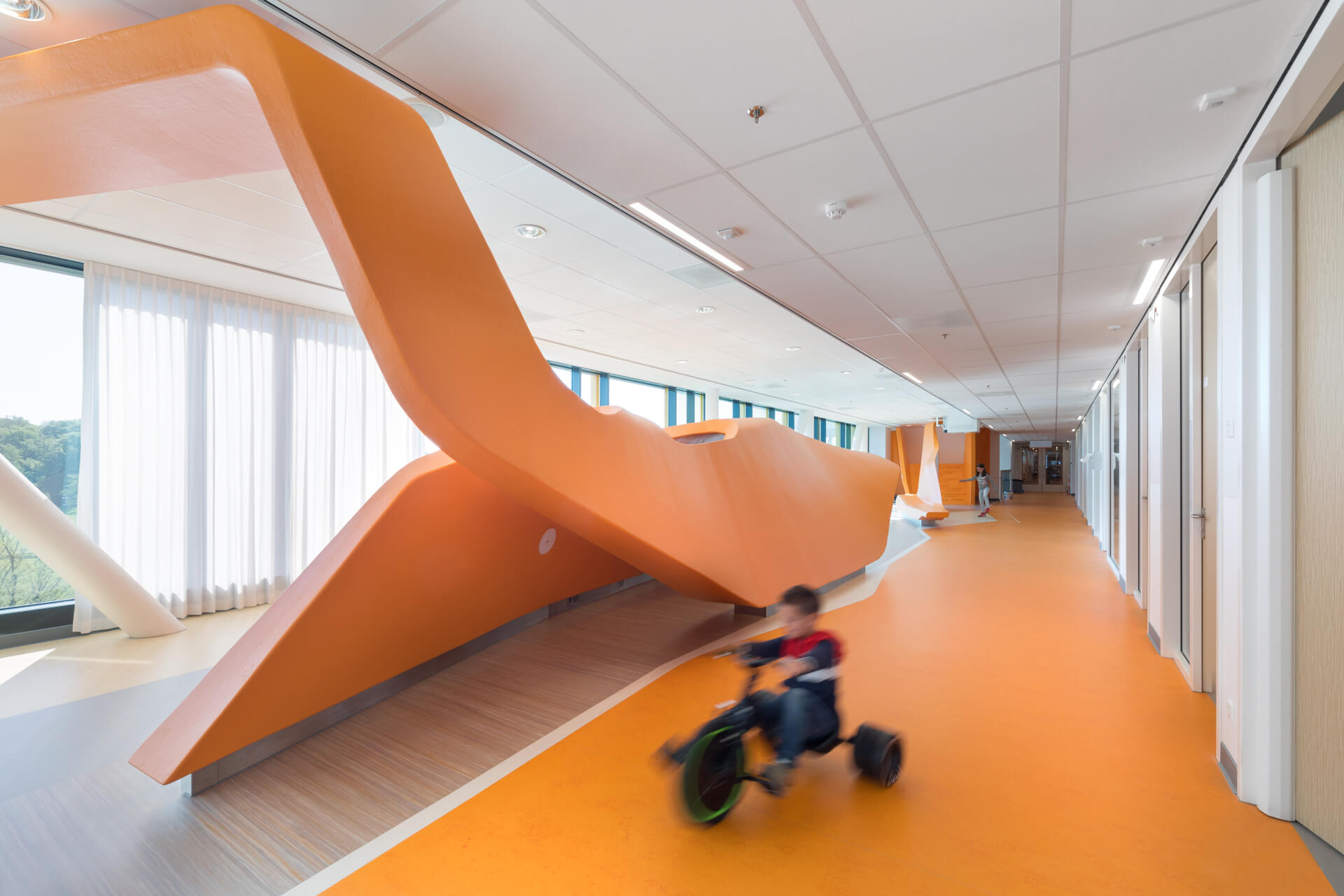“We asked ourselves how we could make the objects we excavate interesting to visitors who know very little about archaeology. That’s how we got the idea not to highlight the actual findings but rather the people who lived in Noord-Holland throughout its history.”
The centrepiece of the exhibition is a group of true-to-life human figures standing around in a circle, several of which are forensic reconstructions of skeletons found in Noord-Holland. The actual, original skeletons are stored in glass caskets designed for the reconstructions.
“You actually get to see people up close who lived in this area hundreds of years ago. You find yourself asking questions like: who is this person, what kind of life did they live, were they originally from Noord-Holland or were they born elsewhere? How did they die? And those happen to be the same types of questions archaeologists ask themselves.”
The human figures stand around a large floor projection where visitors can see how the landscape of Noord-Holland has changed over the centuries, sometimes making human habitation possible and at other times actually preventing it. A large circle of glass displays has been positioned on the exterior linking the human figures to findings from their era.
“It’s kind of like you’re pulled into the circle and get to experience the past, which is completely different from watching a glass display with pots. In that case, it’s all about the pot, whereas at Huis van Hilde it plays a different, more subordinate role. I feel we tell the story in a more interesting way.”
The glass displays were designed specifically for this exhibition. We worked with the manufacturer to develop displays where each separate section could be climate-controlled, making it possible to exhibit organic and non-organic materials and metals in a single display. The design of the displays is both solid and technically ingenious.
